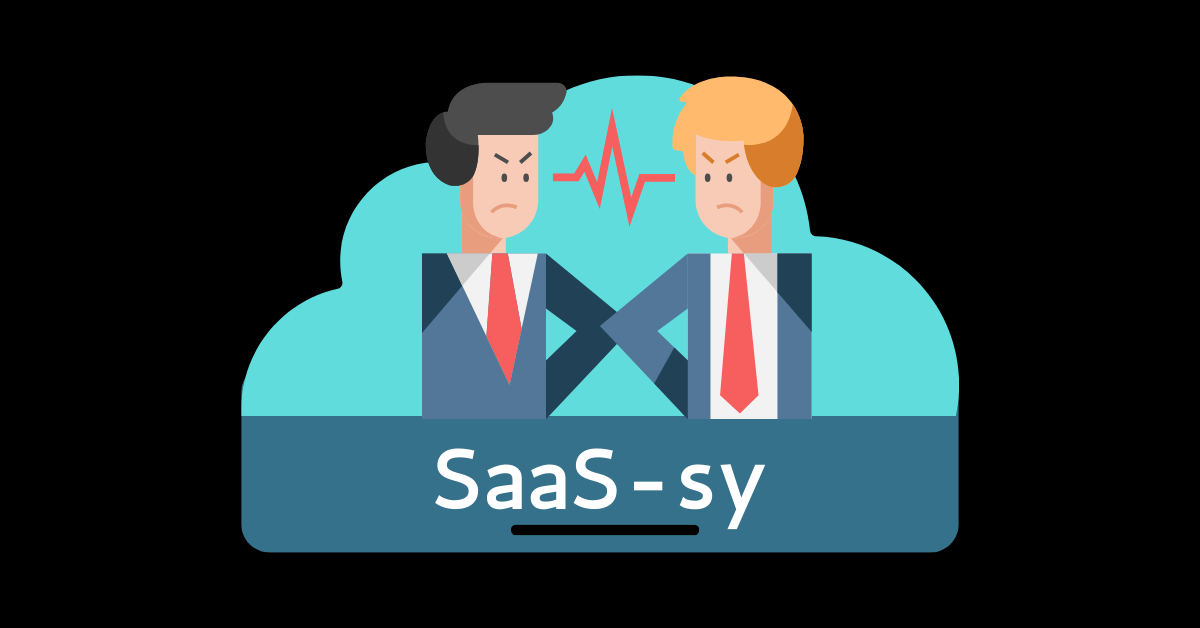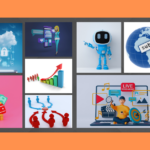The rise of Software as a Service (SaaS) has reshaped the business landscape as we know it. There are immense opportunities for startups to disrupt sectors with innovative products.
SaaS continues to find the ceilings of what modern technology is capable of and push through them with brute force. However, a new challenge has arisen: adoption rates.
More than 30,000 SaaS companies are now vying for market share. This has led to many founders feeling like they’re trying to hike through a national park without a map or a compass.
Essentially, they need a guide. You could use a hand.
We’ll be your huckleberry.
Navigating SaaS adoption rates is about making the right choices at every turn. You need to understand the terrain and track the weather conditions. In the business world, this translates to understanding customer needs, being aware of competitors, and staying up-to-date with market trends.
Let’s stick our fingers in our mouths and hold them up to the sky to see if the wind is blowing in a favorable direction.
Wow. Our intern CJ is going to get written up for that one.
We will highlight the best practices for managing these challenges by drawing parallels and insights from real-world examples. Gear up. It’s time to go walkabout.
Table of Contents

Step 1: SaaS Customer Needs Are the Compass of Adoption
Customer needs are the guiding force behind any business decision. That holds true for SaaS adoption as well. And just like a compass helps navigate through uncharted territory, understanding your customer’s needs will help you steer your way to successful SaaS adoption.
A perfect example of this is in the story of Zoom Communications.

Most people aren’t aware of this fact, but Zoom has been around since 2011. However, it didn’t become a household name until the pandemic.
Eric Yuan, CEO of Zoom Communications, recognized the growing need for video conferencing solutions that were easy to use and reliable. He immediately saw a gap that his company could fill. It didn’t take long for Zoom to take substantial market share when most of the world was working remotely.
They’re still pushing boundaries today and are a shining example of how a smart SaaS company never lets itself get too comfortable with what it has.
Step 2: Knowing Your Competition – The Map of Opportunity That Will Increase SaaS Company Growth Rates
Knowing the market means knowing your opponents. It’s a key factor for increasing SaaS company growth rates.
Understanding your competition will help identify opportunities for not only growth but also differentiation.
Look at the biggest player in SaaS: Salesforce.

When Salesforce first entered the market, it faced stiff competition from established players like Siebel Systems. Some journalists even called them the “ant at the picnic”.
- How dare they try to shake up the market.
- There is nothing wrong with paying too much for software.
- Waiting for it to be convenient for their sales team to dispatch a group to install it on all a company’s computers is fine.
- We don’t mind paying for the software company to come and train the staff on how to use it.
That model worked fine, and it’s the way business was done.
Well, the joke’s on them now. Salesforce believed that software should be delivered over the cloud.
The few old-school software companies that have survived are scrambling to catch up to the largest player in the SaaS game.
That’s one big-ass ant.
Step 3: Recognizing Market Trends – Navigating the Terrain of SaaS Adoption Rates
This industry’s market trends change so fast that it can give a one-person SaaS army whiplash. By the time you’ve finished coding your product, it could be obsolete.
Navigating through varying terrains of SaaS adoption rates requires different equipment and strategies. As a SaaS founder, recognizing market trends requires adapting your business approach as things happen. You can’t wait for the dust to settle.
A great example of this is the evolution of Adobe.

Adobe started as a traditional software company.
As the market shifted towards cloud-based solutions, they recognized this trend and boldly moved their entire business structure to a subscription-based SaaS model.
This decision helped them stay ahead of their competition and resulted in significant growth and success. Adobe Photoshop controls nearly half the market in graphics software.
Maybe they should send the CEO of Salesforce a fruit basket. Or at least a Starbucks gift card or something.
Step 4: Developing a Strong Value Proposition – The Climbing Gear for SaaS Adoption
In a landscape where multiple players offer similar solutions, businesses need a strong value proposition that sets them apart.
Like climbing gear helps navigate challenging routes and conditions, a strong value proposition will help your SaaS solution stand out in a competitive market.
An excellent example of this is Slack.

Slack entered the crowded market of team communication tools. But unlike their competitors, they focused on creating a user-friendly and intuitive platform that enhanced productivity.
This unique value proposition helped them stand out and quickly gain widespread adoption. Do you know of Slack competitors that were around in 2013 and are still active and making money? We can’t think of any either…
Step 5: Enhancing User Experience – The Oxygen Tank of Customer Satisfaction
User experience is paramount to the success of any SaaS solution. If users hate your product, you won’t make money. That’s a you problem. Customers not finding value in your product has nothing to do with them. It’s not their fault. And it’s up to you to fix it.
An oxygen tank helps climbers power up a tall mountain. Three hundred-and-fifty-pound offensive linemen get a lot of use out of them too. And it’s for the same reason: Support.
Enhancing user experience is crucial for customer satisfaction and retention. It provides a form of support to your customer base.
A notable example of this is the online project management tool Asana.

Asana recognized the need for a streamlined and intuitive platform for team collaboration. They continuously improve their user experience to keep up with changing customer needs.
They have to. They must go the extra mile with stiff competition from similar products like Notion and Clickup.
Step 6: Implementing a Proactive Customer Success Strategy – The First Aid Kit for Retention
Retaining customers is just as important as acquiring them. And there’s definitely an argument you can make that it’s more important than acquisition.
A proactive customer success strategy should focus on SaaS customer support best practices. Think of it as a first aid kit that revives and retains customers who may be considering switching to a competitor.
HubSpot offers an all-in-one marketing and sales platform.

They are a brand that understands the value of actively engaging and supporting their customers.
They offer personalized onboarding, training, and support – knowing that successful and happy customers pay their bills.
Step 7: Leveraging Data Analytics – The Map of Adoption Pathways
Data is a powerful tool that provides insights into customer behavior and patterns of SaaS adoption rates.
Google Maps may give you the best route. But a paper map shows you all the different paths and roads available.
Data analytics can help identify the most effective strategies for SaaS adoption. But that’s not all it illuminates. Using the information you receive from your data gathering, you can put together an entire suite of possible solutions to any problem you face.
Look at Netflix.

They’re a major player in the Movies as a Service business. A pioneer, in fact. But where they truly excel is in using data.
Netflix uses data analytics to understand user preferences and viewing habits. They were able to take this data and create an algorithm that delivers personalized recommendations to users. Netflix knows what you want to watch next before you do.
Step 8: Encouraging Word-of-Mouth Referrals – Shouting From the Mountain Top
Word-of-mouth referrals have always been a powerful marketing tool. Before marketing was even a word to describe marketing, businesses relied on delivering quality service in hopes that those happy clients and customers would tell their friends and family.
This was a thing before the internet. Before the US was a country. Word-of-mouth marketing is an ancient practice that taps into human psychology and how our brains work.
When people we know tell us a product or service is good, we tend to believe them. Except for CJ, we don’t believe a word that comes out of his mouth.
It’s similar to the climbers shouting from the mountaintop to let everyone in the world know they have accomplished their goal. It signals success and encourages others to follow.
Happy customers can be your biggest advocates in scaling your SaaS adoption rates. A prime example of this is Dropbox.

Dropbox grew exponentially through word-of-mouth referrals due to its ease of use and reliability. They also implemented a referral program incentivizing users to invite others, resulting in even more rapid growth and widespread adoption.
Step 9: Ensuring Scalability – The Rope for Ascent
As your SaaS solution gains traction and adoption, working on scalability should become a priority.
Sure. You could climb a rocky mountain without ropes and hooks. But if you fall, you’re toast. Scalability is kind of like those ropes and hooks. You’re climbing and getting better, but you still need support.
This kind of support doesn’t make you weak or a worse climber than the guy who climbs without gear. It makes you smart. Prepared. Ready for anything that can happen.
Working on scalability is essential for your SaaS business’s continued success and growth. Not to mention vital when attempting to increase your SaaS adoption rates.
Shopify started as an e-commerce platform for small businesses. Eventually, they realized that online business models could pretty much go infinite with scaling with minimal cost.

Now, they’re one of the biggest eCom platforms in the game. They own more than 10% of the global market share and can handle any business, whether big or small.
They continuously invest in their infrastructure and technology to ensure smooth operations as they grow and expand into new markets.
SaaS Adoption Rates – The Climb Never Stops
With everything that was the SaaS 2023 industry behind us, there is no top of the mountain. Just more climbing. And that’s a good thing.
But, the final step in navigating SaaS adoption rates is continually striving for improvement and innovation.
Businesses must continuously evolve to stay ahead of the competition. Innovation makes all the difference in increasing SaaS company growth rates.
So keep climbing. Focus on goals and growth. But know that the climb is never completely finished. Our recommendation for what should be next on your reading list is this post on must-have SaaS product marketing solutions.




